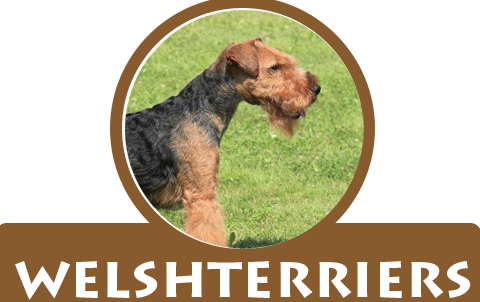About
The Welsh Terrier is a breed of dog, one of many British terrier breeds. It was originally bred for hunting fox, rodents and badger, but during the last century it has mainly been bred for showing. Despite this, it has retained its terrier strength of character and so requires firm, non-aggressive handling. The Welsh Terrier originates from Wales and has been claimed to be the oldest existing dog breed in the UK according to the research of Julian Calder and Alastair Bruce for their book, ‘The Oldest – in celebration of Britain’s living history’. The Welsh Terrier was a latecomer to the British show-ring (being primarily a working dog) and was not officially registered until the 1800s. It is currently on the UK Kennel Clubs list of breeds that are in danger of dying out, having as few as 300 or so pups registered annually, compared to the nations most popular breeds that are registered in their tens of thousands each year.
Appearance
The Welsh Terrier is colored tan on the head, legs and underbelly while having a black or sometimes grizzle saddle. The breed is a sturdy and compact dog of about medium size that can grow up to 15.5 in. (39.5 cm) with a weight of 20-22 lbs (9–10 kg). The tail is usually docked and is more preferred in order to complete the image of a square dog that is as tall as it is long. The body shape is rectangular, with elongated, “brick-like” face. This shape is formed by the whiskers and beard. The hair contains two layers, an undercoat that insulates and an abrasive fur on top that protects against dirt, rain, and wind. Welsh Terriers are born mostly all black and during the first year they change the color to standard black and tan grizzle. An undocked Welsh Terrier tail is only an inch or so longer than a docked tail and does not make a great deal of difference to the overall appearance. The coat does not moult out but old hairs will eventually be stripped out through play and movement etc if the coat is not regularly raked. Ungroomed coats can also fade and thin out as the old hair loses colour and texture. to keep a moult free house and a good coat on your Welsh Terrier it is necessary to rake out the coat on a regular basis.
